AI software and machines are a hot topic. Perhaps one, as an indie author, you might have ignored up to now. But the Alliance of Independent Authors watchdog, John Doppler examines AI art and the impact it might or might not have on indie authors.

ALLi's Watchdog John Doppler
One of my favorite elements of the Star Trek franchise has always been the Holodeck. It's a fictional device that allows users to experience an utterly convincing holographic environment, which they use for interactive adventures (and occasional mayhem when the holograms become self-aware and threaten to destroy everyone).
What captivated me was not the idea of a computer-generated role-playing game, but its use as a design tool. Crew members used the Holodeck to visualize new inventions, design a new shuttle, and even collaboratively reconstruct a lost memory. “Computer, show me a table. No, not wood, computer, make this a metal table.” And like magic, the requested table would appear before them.
I daydreamed about what I could create with that 24th century tool at my disposal. Now, only thirty years later, I and other indie authors have that wonder at our fingertips — in a slightly more limited form. And hopefully fewer homicidal programs!
What is AI art?
AI text-to-image generators such as Dream, DALL-E, Stable Diffusion, and Midjourney allow users to enter a text prompt, which an AI then attempts to render as an image. For example, the user may type in “chair”, and the AI will generate a picture of a chair.
That's amazing in and of itself, but you can also specify styles, media, emotions, color palettes, and a tremendous range of details.
Imagine it, say it, and the AI paints it for you. That is magical.
Art AI for Authors: What Does it Mean for Artists and Designers?
Some artists are excited by this tool. Others are concerned. What place does a professional artist have in a world where someone with no training can create beautiful artwork simply by typing out a brief description?
Emphatically, I say this is not the end of art or artists. Artists did not vanish from the face of the Earth with the invention of the printing press. Or the camera. Or motion pictures. Or Photoshop. With each innovation, artists seized the new technology and made it their own, in the process creating new art disciplines.
Artificial intelligence presents new and exciting opportunities for artists. AI tools excel at creating variations on theme or design. In minutes, an artist can generate dozens of variations on their own concept art. It can effortlessly create a variety of styles and approaches to show a client. It can instantly change the color of a model's hair, or their age, or their setting.
AI can create an endless wellspring of inspiration for creatively blocked artists. And for non-artists, it opens new frontiers in art therapy. It's relaxing, entertaining, and very satisfying to generate something of beauty, without the need for extensive training and practice, and without the fear of judgement.
But does AI pose a serious threat to artists, illustrators, and book cover designers? The AI tools are improving, but as yet, they're no match for human artistry and experience. I believe their most powerful use will be as an augment to artists, not a replacement.
At their core, an AI is an imitator, not an innovator. An AI has no understanding of style or composition or context. It does not “understand”, in a human sense, anything it renders. It manipulates pixels until it reaches an algorithmic approximation of other images it's been told are related. Fine details are often just hinted at, as when it renders a vague tangle of lines as a ship's rigging. The impression is effective at a casual glance, but the nuance is lost, and those defects will stand out on close inspection.
It can sometimes be difficult to coax the imagery you want out of the AI, and there's a great deal of trial and error. The art of tailoring a string of text for the AI is “promptcrafting” or “prompt engineering”, and it entails quirks specific to each AI.
Some concepts are poorly recognized because the AI was not trained on a sufficiently large set of examples. It can ignore or misinterpret prepositional commands, so it can be challenging to render something like “a black dog on the left, a white cat on the right”. The AI does not consider camera distances consistently, and may misread relationships, so an image of a “cat on a couch” may result in a couch with a cat's face printed on it.
And currently, none of the leading AIs are capable of rendering typography, one of the most essential elements of book cover design.
AI art for Authors: Book Covers
The question most relevant to indie authors is whether today's AI-generated art is suitable for book covers. In theory, the answer to that is a resounding yes. With caveats.
First, there are technical limitations. Besides the shortcomings we discussed above, most AI text-to-image generators have a limited resolution that's not high enough for print publishing or illustrations. AI image scalers are available to increase the resolution (a process known as upscaling). Unfortunately, these tend to blur or pixelate parts of the image, which may make it unsuitable for print.
There are limitations to the AI that can prove daunting for some uses. Replicating a specific face without referencing a celebrity is difficult, and that could limit the use of AI art in series covers. You might be able to generate an image that's a perfect match for your book's protagonist, but it may be impossible to render that same face reliably in other images.
Most AI art generators have endless trouble with human appendages, and it's not uncommon for them to output extra fingers, merged limbs, multiple mouths, or nightmarishly twisted figures. AI tools are easily confused by multiple figures as well, so a romance cover featuring a couple embracing can quickly become a horror story about a teleportation experiment gone wrong.
AI Art for Authors: Legal Considerations
On the legal side, AI art introduces several unknown variables into the already complex field of intellectual property law. Authors who intend to use AI-generated imagery in their books need to be keenly aware of the uncertainties and risks associated with it. Without getting too deeply into the law of any particular jurisdiction, we can say that AI technology presents new questions and complications for which there is no legal precedent.
It is possible to use AI tools to emulate the style or distinctive elements of another artist. Does this constitute an infringement of that artist's copyrights, trademarks, or other intellectual property rights? This sometimes happens even without an intentional prompt to emulate those features. AIs will sometimes generate a signature or stock photo banner as part of the image, assuming that's part of what defines the subject. If a recognizable element such as a trademarked symbol or signature flourish should be inadvertently included in your art, that might open you to claims of infringement, or accusations of plagiarism.
AI can also create photorealistic images of a celebrity, or model characters after a celebrity, potentially infringing on their right to publicity. (Asking the AI for an amalgam of two or more celebrities may mitigate this risk to some degree.)
Although the US Copyright Office has stated definitively that “human authorship is a prerequisite to copyright protection”, that doesn't mean that AI-assisted art is ineligible for copyright. The ruling in question states only that an AI may not be registered as the author of a creative work. Still, book cover artists who intend to register their work may need to show that they have modified the original AI output sufficiently to provide the creative expression that is a requirement for copyright.
By contrast, the UK is one of a handful of countries to protect works generated by a computer where there is no human input. There, the “author” of a “computer-generated work” (CGW) is defined as “the person by whom the arrangements necessary for the creation of the work are undertaken”. Protection lasts for 50 years from the date the work is made.
Although the terms of service of most AIs are generous about commercial use, they automatically grant a license for users to freely adapt and remix other users' works. This means that an AI-generated image used as a book cover is non-exclusive, and another user could modify that image and use it in a different work. The copyrightability of an AI-assisted cover as a whole is very much unsettled in legal precedent, and courtroom battles are likely.
Most of the current AI tools possess the ability to perform inpainting and outpainting — cleanly replacing the foreground, background, or specific components of an image. There is the possibility that pirates may use these features to generate knock-off of bestselling title covers, for example, by replacing the background with a slightly different one, or swapping out the face on a model. Due to the copyright issues discussed above, this may prove to be entirely legal, despite the wholly unethical nature of the practice.
A more serious and foundational issue lies in the ethics of the AI training. These AIs are trained on millions of images, some of which were copyrighted, and the creators of those images and artworks did not grant permission for their use in that context, and received no credit or attribution or compensation for the use of their copyrighted images. Now any user of that AI can emulate the artist's work, again without credit, compensation, or even the user's knowledge that they are adapting elements from other artwork.
Law and litigation are slow-moving, and struggling to catch up with new technological developments. The speed of AI-related innovations leaves a gaping hole in the legal fabric surrounding art and copyright, so a measure of chaos in that arena is inevitable.
Authors and Art AI: The Future
With great power comes… some truly awful book covers. The ease of use of AI text-to-image generators puts a powerful tool in the hands of novices, and I have no doubt that we'll soon see a wave of AI-generated book covers of varying quality entering the market. Some may look a bit “off” in one aspect or another; some will have a distinctively computer-generated feel that will rapidly become cliché; and very few will be indistinguishable from professional cover art.
In the self-publishing arena, a new wave of service providers will offer inexpensive illustrations or cover designs based on AI output. Less skilled publishers may fall back on AI for cheap cover designs. Ethical service providers will disclose this up front, but many scammers and shady vanity presses may be less transparent about it.
Book cover designers will step up their game
Fuelled by access to new tools and easier content development, and pressured by the ready availability of “quick and dirty” covers, I predict the coming year will see a burst of innovation and beautiful new designs by book cover designers seeking to stand out from the crowd.
A glut of content
The ease of generating new images in bulk will be extremely attractive to “low content publishers”, who tend to list large quantities of journals, diaries, and notebooks with a single eye-catching image on the cover. As the market for these biblia abiblia is already heavily saturated, the advantage goes to the seller who can output the most items.
AI image generation will greatly speed the process of acquiring artwork for covers. A severe increase in the number of these mass-produced journals on retailers may mean greater infiltration into literary categories where they don't belong, and pollution of search results.
Another sector where text-to-image generation may prove to be immediately disruptive is the stock photo industry. AI tools are capable of quickly and easily generating unusual imagery and photorealistic studio-lit objects, which makes it easy to flood stock photo sites with torrents of AI-generated images.
This may soon become problematic. There is no requirement to label these images as computer-generated, and no way to filter them out of search results. This may make it harder for customers to find authentic images, and as a consequence, stock photo sites may implement labeling requirements or outright bans on AI images. Getty Images has just announced a ban on AI-generated art, but for legal concerns rather than preserving a space for human artistry.
Growing objections from professional artists, and calls for ethical guidelines
AI is replacing artists, but not the way you might expect. Because the AIs can emulate an artist's style, artist names are frequently used as keywords in a prompt. In the case of some popular artists, this has led to their displacement from search engines.
There is a strong argument for excluding the work of living artists from AI training models. That presents a huge technical challenge for developers, and it may be too late to correct it in existing models.
AIArtists.org has a list of ethical AI guides and books and other ethical resources here: AIArtists.org/ai-ethics.
Based on a call for comments regarding AI and authors, ALLi recommends the following principles to be upheld by ethical authors in relation to AI:
- Humans remain responsible agents and must recognise their own responsibilities in using an AI tool
- It must be possible, and should be easy, for all users to find out who is responsible for any AI tool
- AI should never be designed to be deceptive
- User privacy should be built into the design
- Users should not be forced to use an AI if they choose not to
- Users should be aware that behind every apparently human-free machine and process are real people.
- No worker should be exploited in the creation or use of AI systems
- AI should expand not diminish human relationship
This list can easily be adapted when considering the use of AI art for authors.
More on ALLi's ethical recommendations re. AI for authors here.
Bans on AI art in showcases
I anticipate growing resistance to AI artwork, spurred by artists' fears of replacement and concerns over the ethics of AI. In particular, those who share AI images without clearly identifying them as such are likely to be accused of fraud or fakery, of passing off the machine's creation as their own artistry. Indeed, several art websites have already banned AI art, citing their focus on human-created artwork and concerns over an endless flood of computer-generated works. Similar policies are likely to appear across a wide range of content marketplaces.
A proliferation of NFT schemes
AI-generated art and NFTs are a natural pairing, but one with poor prospects. A flood of NFTs from entrepreneurs looking to cash in on the latest low-effort, pushbutton craze will only distract from more helpful and worthy uses of blockchain technology.
An increase in misleading or criminal content
Beyond the sphere of indie publishing, AI-generated imagery poses more dire threats. Some tools, such as Midjourney, retain control over the prompts used to generate images, and swiftly crack down on violators. Other systems such as Stable Diffusion are open-source and run locally, without moderation. These have given rise to a number of abuses: political disinformation, abusive deepfakes, and simulated child pornography have already begun surfacing on social media and disreputable private forums.
It may be impossible for the casual viewer to differentiate synthetic images from authentic images, and the AI output will only improve as time goes on.
A taste of AI art
It's astonishing how far AI image generation has come in such a short time, and I would encourage anyone who's interested in, or concerned about, this technology to try it. It's addictive fun, and for those who produce or consume art, it's good to have a sense of what these tools are capable of.
I'll leave you with a few samples from Midjourney, one of the most popular AI tools. The images below were output directly from Midjourney, without editing.
Over to you

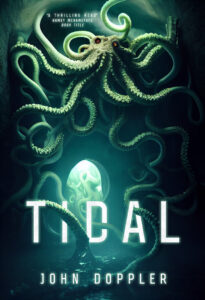 Emily Reading has graciously offered the following “just-for-fun” mockup. It neatly demonstrates the ease with which a skilled cover designer can convert an AI image into a striking book cover.
Emily Reading has graciously offered the following “just-for-fun” mockup. It neatly demonstrates the ease with which a skilled cover designer can convert an AI image into a striking book cover.
How do you feel about AI art? Would you consider using it in your work? Let us know in the comments below!



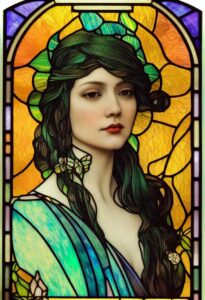
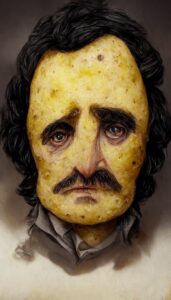
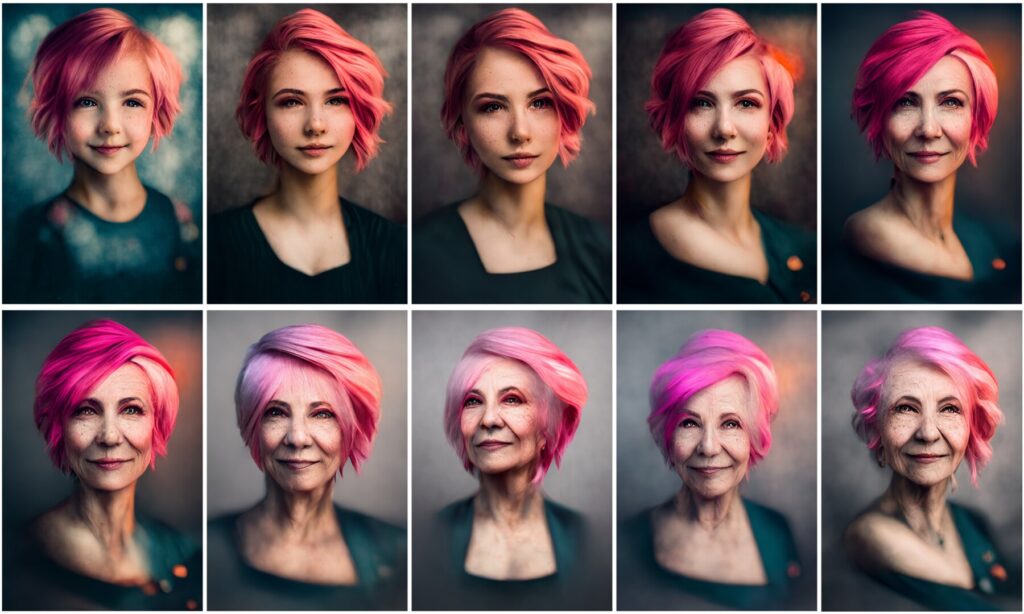

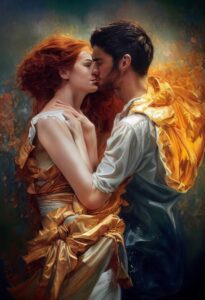
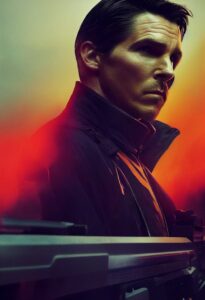


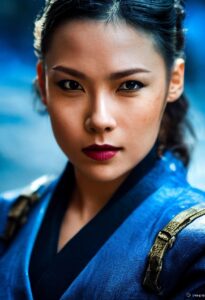

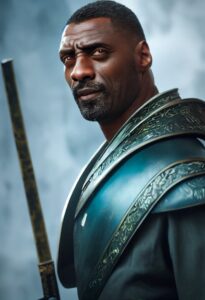
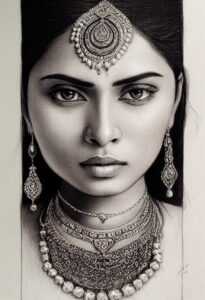
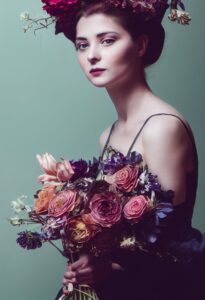

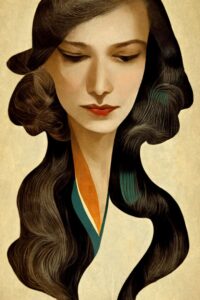
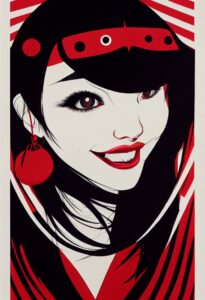
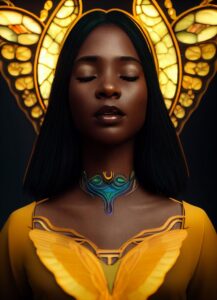
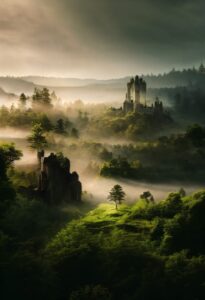


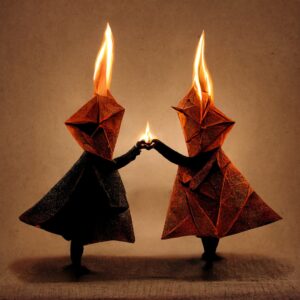
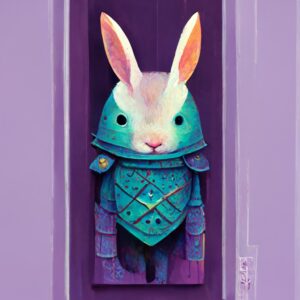
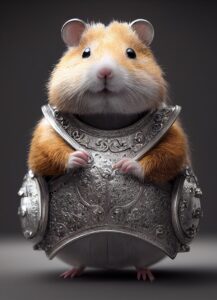
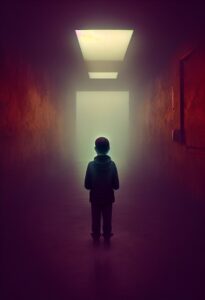

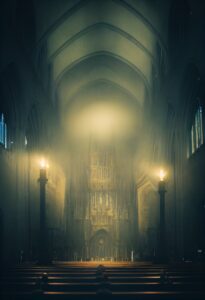


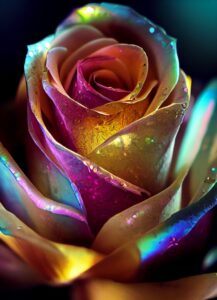
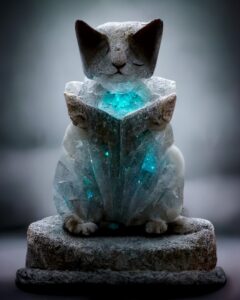
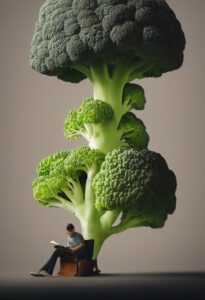

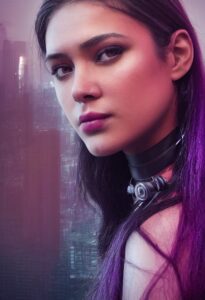

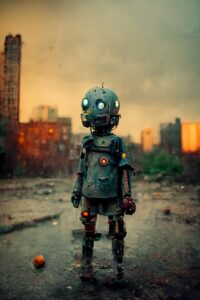



This is a really good question! It makes me wonder about the future for artists. If AI can make art so easily, what does that mean for people who draw and paint? It’s a bit scary to think about, but also interesting.
AI art is a double-edged sword for indie authors. While it offers incredible creative possibilities, the legal and ethical implications are daunting. It’s crucial to navigate this new landscape thoughtfully.
This article is from late last year, but since I’ve come upon it doing my own research I’d like to offer an artist’s perspective- and one who does book covers, in fact.
The main issue with AI technology isn’t the technology itself, which is fantastic- it’s the fact that MOST, and by that I mean something as insane as 99% of the artwork that the technology draws upon is taken from the internet without the artists’ permission, thrown into a blender with similar styles, and spitting out beautiful Frankenstein’s monsters. If the artists that it is drawing from are given fair use compensation, or even remotely asked permission, this wouldn’t be an issue.
But as it stands, you can approach an artist you LOVE, get a commission slot and realize it’s just way too expensive for you to afford. So instead of paying that person for their skill and time, you go over to Midjourney AI and create nearly the exact thing you wanted. For free.. when it uses THAT artist’s work as samples anyway.
Much like someone who would NEVER steal a book from a bookstore may not even blink twice when they stumble upon a link to download the e-book illegally- the internet provides an anonymity that a lot of people don’t realize is affecting their decisions. Real people are being affected.
If you had to walk in front of the artist at their art gallery, take pictures of their paintings, look them in the eye and say “I LOVE your work, but I can’t afford you, even though your prices are entirely appropriate for your skill- so I’m going to piece your work together myself, sorry about that.”
I get it- art is seen as a luxury and it can be VERY expensive. The technology is STUNNING and can be used to do some absolutely amazing things- but we as humans can’t be trusted to just automatically do the ‘right’ thing.
AI Technology which has previously, currently, or plans to use samples of any art piece needs to be regulated for profit usage- Ask. Permission. Pay for the images used to teach it like stock photos.
Thank you for an excellent article on AI Art. I think upcoming iterations of DALL-E, Mid journey, Stable Diffusion, and more. will greatly improve the image’s ability to mimic the prompt-based style, so capturing that style of human-drawn illustration isn’t far off
I’ve been exploring a bit with MidJourney, and it’s a fascinating tool. I am not an artist (I can do my own title components over artwork and that’s about it) and wouldn’t be able to do much to improve a result using Photoshop, but I do know people who can.
As an author, I have a bias for a particular sort of illustrated cover for my Fantasy genre novels. That sort of drawn (by artist) illustration (example: https://hollowlands.com/books/the-affinities-of-magic/fragments-of-lightning/ ) is part of a genre expectation that conveys a certain sort of genre “Fantasy” cue, and is therefore important to me as part of the communication with a potential buyer. My cover artist also takes into account my standard “brand” placement of Author, Title, Series by designing appropriately, and I consider all of that very important for branding within a series and across series as an author.
So, for me, I don’t seek such an AI-generated book cover. However, I think the SFF crowd is particularly drawn to the spaceship/monsters/dragons/etc. possibilities, since it’s hard to find and repurpose stockphotos of things that don’t exist. I think that will generate a boom in obvious AI images for those genres from Indies, to the point where it will saturate the market (and become less useful for amateurs to use). AI images in talentless hands can be fairly recognizable as such, and less striking accordingly (due to less idiosyncrasy) after the “ooh!” factor wears off.
For other genres, however, or for intriguing single subjects… there could be real benefits (though your brand identity components will still be a challenge: placement of author/title/etc.)
Where I find utility for AI images is in blog posting, No one wants to see your book covers as a top image for every blog post, but you can certainly create genre-specific (and perhaps brand-specific, with certain prompts to generate a certain recognizable “look”) dreamworld images pretty easily for every post using an AI. I’ve started experimenting with that and hope to produce a disciplined framework for AI-image-generation over time.
One more thing… Advertising (esp. via Facebook) is partly a game of testing particular images to go with your text re: how many clicks you get, and that image is usually NOT your cover (too busy). Trying to find good images that resonate with your market can be very time-consuming, costly (to produce and test), and ineffective.
A branded-to-you (or your series) AI-image approach might be the answer — disciplined prompts to control “brand recognition” combined with variable subjects to test for best-fit-for-buyers would be very interesting, if it can be achieved. I’ll be testing that, too.
Good insights, Karen.
I think that the coming iterations of DALL-E, Midjourney, Stable Diffusion, etc. will be greatly improve their ability to imitate a style based on image prompts, so capturing that human-drawn style of illustration isn’t out of reach. But the artist’s intuitive grasp of what looks “right”, and how to tie the typography and branding into the image is still a long way off. If and when we see AI typography (and I believe that’s coming soon), those early generations will likely be just styled text pasted over an image rather than harmoniously integrated with it.
I view AI art in the same light as book cover template generators. They lower the skill requirement to create a book cover, but at the same time, they enable amateurs to create a hideous eyesore.
As for blog images, it’s no coincidence that this article’s cover photo was generated in Midjourney! That’s where I think AI art really shines at the moment: utilitarian images and decoration rather than fine art.